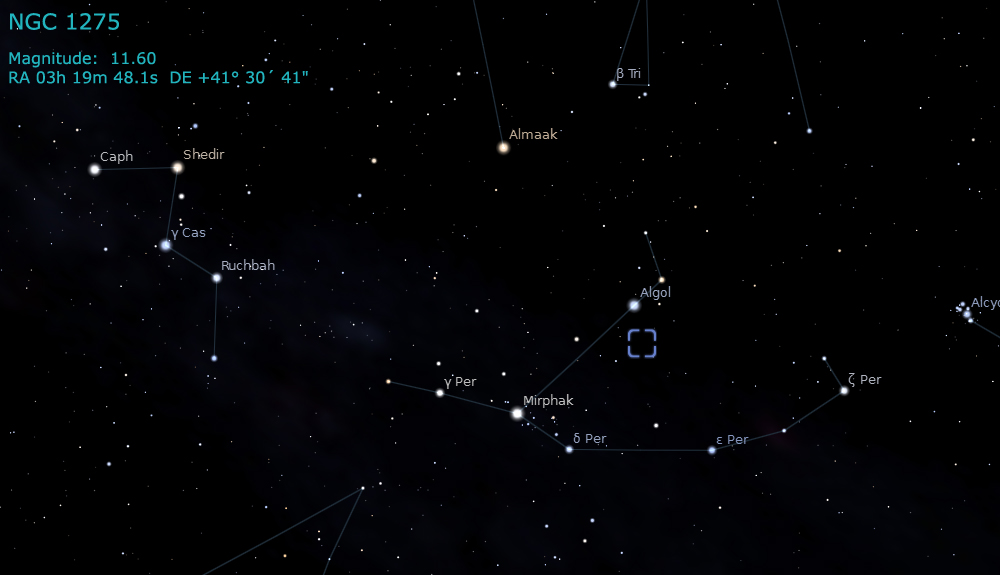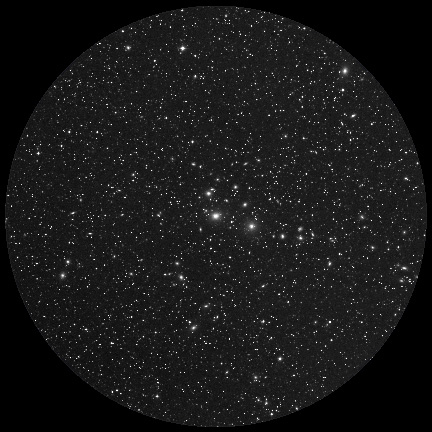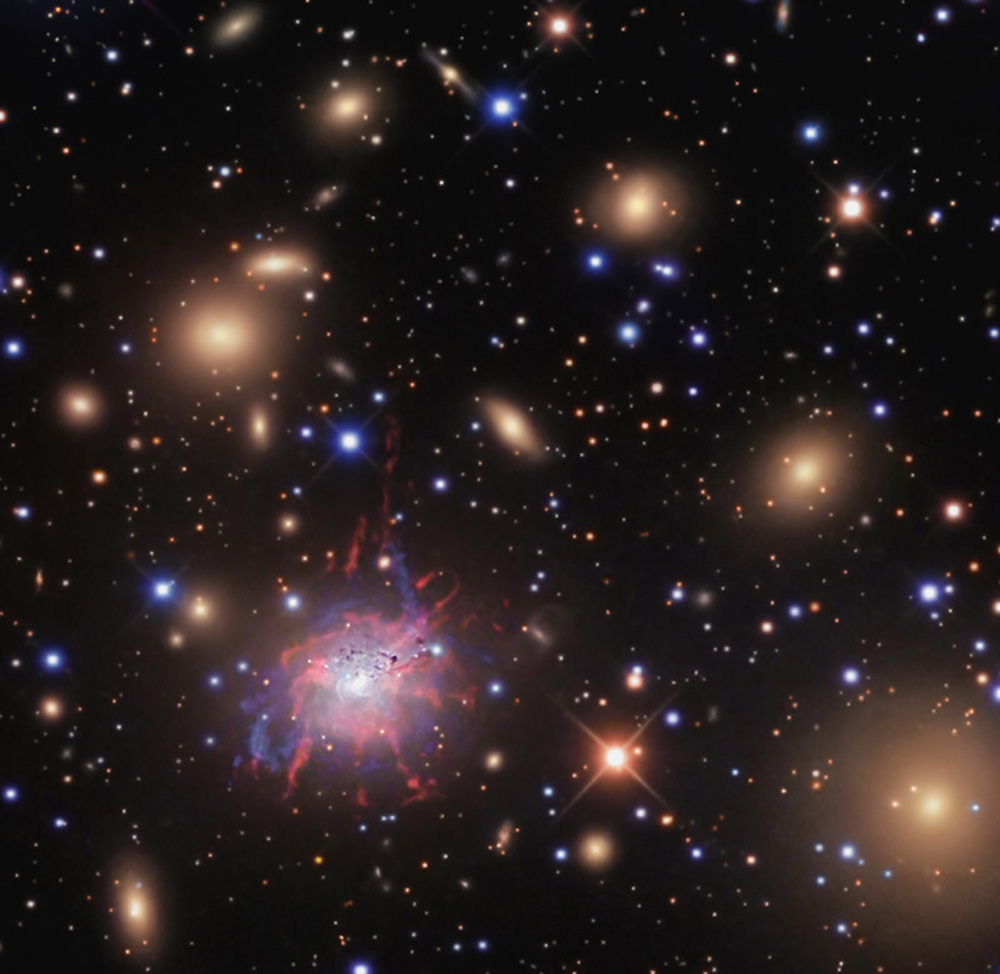The center of a large cluster of galaxies can
be a dangerous place. Most astronomers think that it is common
for galaxies to collide in these kinds of cramped quarters (on
galactic scales). This is why most compact galaxy clusters
contain elliptical like galaxies. After many collisions the
delicate structures of spiral galaxies are morphed into the more
stable configuration of an elliptical galaxy. Here we see this
dramatic process happening with NGC 1275. The very center of NGC
1275 contains two or three curves which used to be spiral arms.
The dust in the foreground of NGC 1275 is what remains of the
challenging (and losing) galaxy. All of this activity makes the
gas release radio wavelengths of light. Thus, NGC 1275 is often
called Perseus A as it is the brightest object in this direction
in these wavelengths of light. All of the galaxies in the field
(perhaps more than 100 if you count the myriad of faint fuzzies)
are on the order of 200 million light years away.





